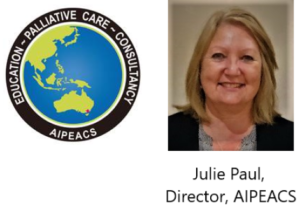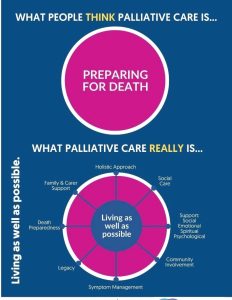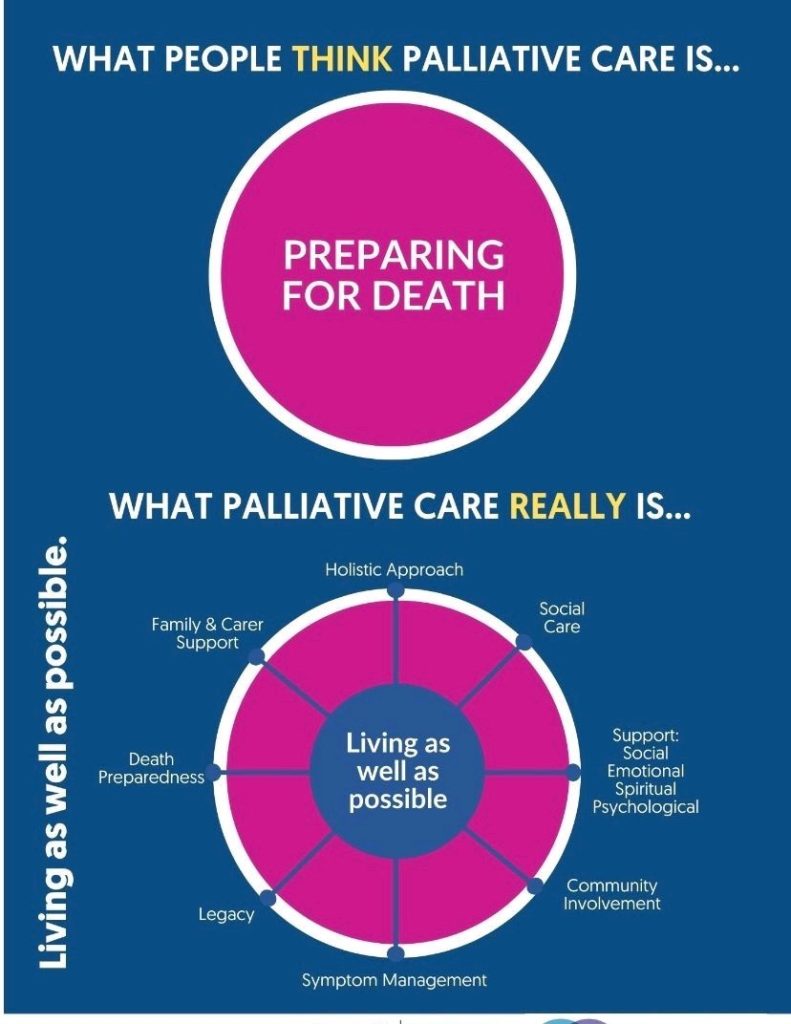
日本語訳監修: 木下佳代子 ジェックス参与
ここ数ヶ月、私たちは緩和ケアにおけるコミュニケーションに関連する重要な分野に焦点を当ててきました。 最近、緩和ケア
とアドバンス・ケア・プランに関する話し合いを改善するためのメッセージング・ ツールキットを提供する、非常に有用な
ウェブサイトを見つけました。 この情報はアメリカで行われた研究の結果で、エビデンスに基づいていますが、どの国でも
通用する情報です。 https://seriousillnessmessaging.org
このウェブサイトは読んで話し合う価値があり、例えば、コミュニティと関わるために必要な新しいスキルの提案や、緩和ケアや
アドバンス・ケア・プラニングなどの分野で、私たちが行ってきたメッセージがなぜうまくいかないのかについて論じています。
アドバンス・ケア・プラニングや緩和ケアの分野で推奨される話し合いの進め方は、5つの原則に基づいています:
1. メリットを語る
- 2. ステップごとに選択肢を提示する
- 3. ポジティブなストーリーを使う
- 4. 一度だけでなく、対話を促す
- 5. チームについて話し合う
このような会話をするための最適な方法を紹介する分かり易いガイドがあり、
https://seriousillnessmessaging.org/quick-guides/acp/ で見ることができます。
また、このウェブサイトでは、ウェブサイト、パンフレット、ソーシャルメディアなどでアドバンス・ケア・プラニング
を促進するために使用できる理想的なメッセージも提供しています。
例えば:
– あなたは自分のケアについて発言することができます。 治療法は、あなたにとって有効である場合にのみ機能します。
– あなたが望むケアについて、最も重要な人々に話してください。 あなたが発言すればするほど、あなたの医療はより
良いものになります。
– あなたにとって最も重要なことを医師に伝えてください。 あなたに合ったケアを受けることができます。
– 一緒に考えましょう。 ケアの計画を立てましょう。
ぜひ一度、このサイトを読んでみてください。比較的短く、ユーザーフレンドリーな方法で書かれています。
シンプルで力強い言葉を使っています。
また、今日 Linkedin (Facebook/TwitterのようなSNSでビジネスに特化したSNS=リンクトイン)で非常に興味深い
写真を見つけました。作者不詳ですが、コミュニティが考える緩和ケアと実際の緩和ケアとの違いを非常に明確に
示しています。 これは、なぜ人々が緩和ケアの話をするのをためらうのか、そして、話を進めるためには、
まず彼らの視点を取り上げる必要があることを、私たちに気づかせてくれる良い例です。
 |
[一般人が緩和ケアについて どのように理解しているか?]
“死を迎えるための準備をする“
{緩和ケアの本当に意味すること・・}
『可能な限り’生’を享受すること』
|
この絵を人に見せることが、会話のきっかけになるのかなと思います。 皆さんのご意見を伺いたいと思います。
追加情報をご希望の方は、メールでご連絡いただければ、追ってご連絡いたします。
もし、追加情報が必要な特定の分野があれば、julie@palliativeeducation.com にリクエスト(英語または日本語)を
転送してください。 必ず話し合いをさせていただくことをお約束します。
あなたがどのように過ごしているか教えてください。 緩和ケアに関する皆さんの考えや経験を共有することは
とても楽しいことで、私たちはお互いから学び続けることができます。
来月号のJulie’s Updateを楽しみにしています。
ごきげんよう、ジュリー
事務局より:
ジュリーさんは、皆様からの感想、質問などをお待ちしています。
-
Disclaimer: November 2022 免責条項:
Australian International Palliative Education and Consultancy Services (AIPEACS) は、Julie’s Corner シリーズ内の内容につき -
正確な情報の提供に細心の注意を注いでいますが、特にある事柄についての専門的意見を提供するものではありません。このシリーズに
-
含まれる情報は、独立した専門家の見解に取って代るものではありません。また、医療上の助言として利用したり、何らかの疾患の治療、
-
手当、又は、予防のために使用されるものではありません。
-
AIPEACSは、このシリーズにより提供される情報の利用、依存によるいかなる法的責任、怪我、紛失、損害については、責任は負いません 。
Australian International Palliative Education and Consultancy Services Pty. Ltd -
Julie’s Update: November 2022 (原文) -
-
The last few months we have focussed on areas of importance related to communication in palliative care. Recently I came across
-
a very useful website hat provides a messaging tool kit to improve our discussions on palliative care and advance care planning.
-
The information is evidence based as a result of research completed in America, however the information is very relevant across
-
all countries. https://seriousillnessmessaging.org/
The website is well worth a read and it discusses, for example: the suggested new skillset required to engage with community
and why the messaging we’ve been doing isn’t working in areas such as palliative care and advance care planning.
The recommended approach to discussions in the areas of advance care planning and palliative care are based on five principles:
- 1. Talk up the benefits
- 2. Present choices for every step
- 3. Use positive stories
- 4. Invite dialogue and not just once
- 5. Discuss the team
-
There is a quick guide that informs you of the best way to approach these conversations which can be found here:
-
The website also provides ideal messaging that can be used to promote advance care planning on websites, brochures
-
and social media for example:
- – You can have a say in your care. Treatments only work if they work for you.
- – Talk to the people who matter most about the care you want. The more you speak up, the better your health care can be.
- – Tell your doctors what matters most to you. You can get the care that’s right for you.
- – We’ll figure this out together. Let’s make a plan for your care.
- I would strongly encourage you to have a read of the website. It is relatively short and written in a user friendly way.
- Using simple yet powerful language.
-
I also came across a very interesting picture on Linkedin today, author unknown, which very clearly demonstrates
-
the difference between what the community think palliative care is and what palliative care really is.
-
It is a good example to remind us of why people may be hesitant to discuss palliative care with us and
-
how we need to address their perspective first to be able to progress the conversation.

-
I wonder if it would be useful to show people this picture as a starting point in the conversation. I would be interested to
hear your thoughts on this. If you would like additional information, please email me and I will follow this up.
If you have any particular areas you would like additional information on, please forward your request (either in English or Japanese) to
julie@palliativeeducation.com and I will ensure this is discussed.
Please let me know how you are going. I enjoy sharing your thoughts and experiences on palliative care, so that we can continue to learn from each other.
I am looking forward to our next month’s catch up.
Stay safe Julie
